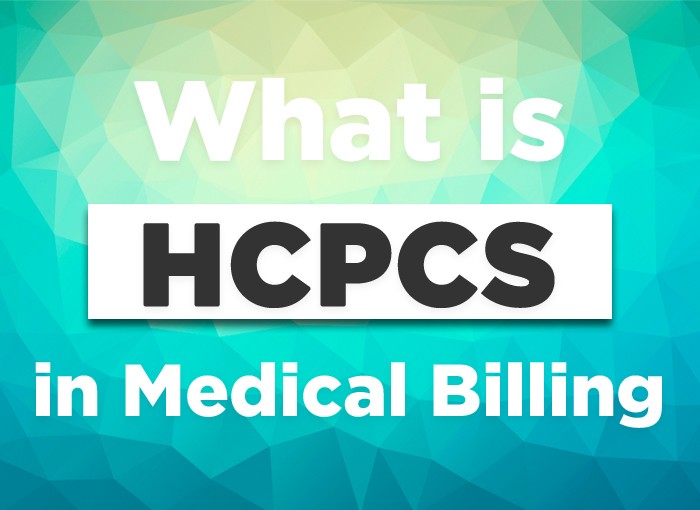What does HCPCS stand for in Medical Billing
In the US the healthcare industry employs a whole lot of styles of codes, ICD, HCPCS, CPT, etc., for scientific billing purposes. These codes are supposed to deliver standardization utilizing assigning codes to physician and non-physician services. Thus came into impact the HCPCS code system.
Understanding HCPCS (Healthcare Common Procedure Coding System)
It refers to a standard coding system for Healthcare by the Common Procedure Coding System, thereby representing several healthcare procedures, supplies, and services ranging from the very first inception. It was meant for the uniformity of certain items and services but became mandatory after the HIPAA Act to comply with some services.
Historical Context
In 1983, the Centers for Medicare & Medicaid Services (CMS) introduced the HCPCS. They created this system based on CPT coding from the American Medical Association. This has contributed to the uniformity in the medical billing practices followed by the entire United States. The system has evolved over the years and modified to accommodate the healthcare needs of the providers and insurance companies together with those of the government agencies.
Types of HCPCS Codes
CMS adopted the HCPCS code in 1983 basing it on the AMA’s CPT coding system. The HCPCS code has three parts—Level I, Level II and Level III.
- LEVEL I: TCPT (Current Procedural Terminology) codes make up the Level I HCPCS codes, which are numbers. CMS didn’t change these codes but added them to HCPCS. When doctors use these codes for Medicaid and Medicare, they count as HCPCS codes, not CPT codes. Let’s say you’re treating an older Medicare patient who needs a tracheal stent. You’d use CPT code 31631 as an HCPCS code. Level I codes can be tricky to use because of this detail. That’s why hospitals need to hire medical coders with good training. Remember, CPT codes apply to diagnostic, medical, and surgical services.
- LEVEL II: The difference between CPT and HCPCS is visible in the Level II HCPCS codes and HCPCS modifiers. The HCPCS codes in this category are alphanumeric and are used to cover products, supplies, and services that do not fit in Level I.
- LEVEL III: The Level III codes are referred to as HCPCS local codes—suggesting that these codes were created by local/state Medicare and Medicaid agencies/contractors and private health care insurers. Unlike Level I and Level II, these codes aren’t recognized at the national level and are used within certain jurisdictions.
Level II HCPCS Codes
The Level II codes are the actual HCPCS codes that were created by CMS to standardize non-physician services at the national level for billing/ transaction purposes. The primary use of Level II HCPCS codes includes services such as ambulance services, drugs, infusion additives, ancillary surgical supplies, walkers, wheelchairs, and other non-physician services (Level 1 codes don’t cover that). The codes have 5 character code structure—the characters begin with a letter and end with 4 numbers.
For example, code C1823 is used to report Outpatient PPS like generator, neuro-stimulator (implantable), non-rechargeable, with transvenous sensing and stimulation leads. It is important to note that HCPCS codes follow a specific range of divisions to represent various products and supplies. For instance, ambulance and other transport services and supplies are reported under the HCPCS code range A0021-A0999, whereas hearing services are reported under the code range V5008-V5364.
Importance in Healthcare Administration
Insurance Processing
HCPCS codes are crucial for:
- Determining coverage eligibility
- Processing claims efficiently
- Standardizing reimbursement rates
- Reducing billing errors and fraud
Compliance Requirements
Healthcare providers must maintain HCPCS compliance by:
- Using current code versions
- Documenting medical necessity
- Following proper coding guidelines
- Maintaining accurate medical records
Quality Tracking
HCPCS codes enable:
- Performance measurement
- Healthcare outcome tracking
- Resource utilization analysis
- Cost containment efforts
Best Practices for HCPCS Coding
Documentation Requirements
- Proper HCPCS coding requires:
- Detailed clinical documentation
- Specific diagnosis information
- Clear medical necessity justification
- Accurate service dates and quantities
Common Coding Challenges
Healthcare providers often face challenges with:
Code Selection
- Choosing between similar codes
- Understanding code hierarchies
- Applying appropriate modifiers
Updates and Changes
- Quarterly updates to Level II codes
- Annual updates to Level I codes
- Implementation of new guidelines
Risk Management in HCPCS Coding
Common Risk Areas
Documentation Deficiencies
- Incomplete records
- Missing signatures
- Insufficient detail
Coding Errors
- Incorrect code selection
- Improper modifier usage
- Unbundling issues
Mitigation Strategies
Preventive Measures
- Staff training programs
- Quality control processes
- Documentation templates
Corrective Actions
- Regular audits
- Immediate error correction
- Process improvement implementation
Tips for Accurate Coding
To ensure accurate HCPCS coding:
- Stay current with coding updates
- Maintain detailed documentation
- Verify insurance requirements
- Implement regular coding audits
- Provide ongoing staff training
Future of HCPCS
The HCPCS system continues to evolve with:
- Integration of new healthcare technologies
- Expansion of telehealth services
- Changes in healthcare delivery models
- Updates to payment methodologies
Healthcare providers have to keep abreast of these changes, as regards accuracy in billing and getting the best possible reimbursement. Regular training and updates on HCPCS coding changes will thus be necessary to remain compliant and effective in medical billing activities.
Conclusion
Coding with HCPCS is very important and dynamic in medical administration. Proficiency in medical billing is more than just understanding procedures to follow in using the different codes. Regular updates, compliance, and efficiency are mandatory for succeeding in HCPCS coding. Through proper education, documentation, and quality control measures, healthcare providers can optimize their billing processes and ensure appropriate reimbursement for services rendered.
The future of HCPCS coding will always mark a change in time with changes that come in medical delivery modes, technology advancements, as well as regulations. It will then be necessary that one remains abreast in this area through deepened learning and ongoing adaptations as new requirements demand so that the financial success and compliance of healthcare organizations can benefit.



